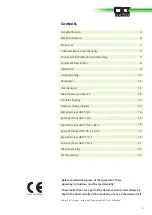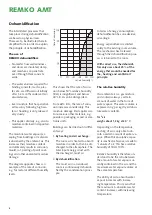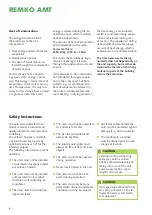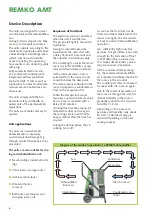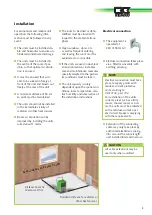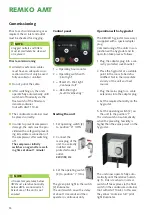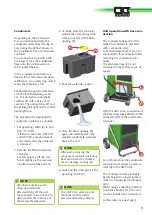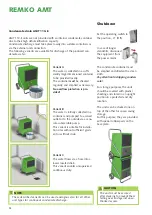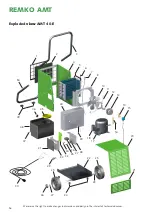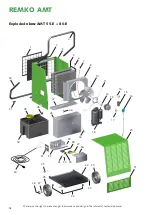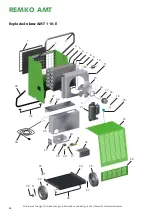
Heat of condensation
The energy transferred from
the condenser to the air is
composed of:
1. Heat energy extracted from the
evaporator.
2. Electrical drive power.
3. The heat of condensation re-
leased through the condensation
of water vapour.
For the change from a liquid to
a gaseous state, energy is neces-
sary. This energy is termed heat of
evaporation. It does not cause any
rise of temperature, it is only nec-
essary for the change from a liquid
to a gaseous state. Vice versa,
energy is released during the liq-
uefaction of gas, which is termed
heat of condensation.
The amount of heat of evaporation
and condensation is the same.
For water, this is:
2250 kJ/kg (.18 kJ = 1kcal)
This shows that a relatively large
amount of energy is released
through the condensation of water
vapour.
If the moisture to be condensed is
not introduced through evapora-
tion in the room itself, but from
outside, e.g. via ventilation, the
heat of condensation released in
the process contributes towards
room heating. In drying processes,
the heat energy is recirculated,
which is consumed during evapo-
ration and released during con-
densation. The supplied air during
dehumidification creates a large
amount of heat energy, which is
expressed as a rise of temperature.
The time necessary for drying
normally does not depend only on
the unit capacity, but is rather de-
termined by the rate at which the
material or parts of the building
release their moisture.
Safety Instructions
The units were subjected to ex-
tensive material, functional and
quality inspections and tests prior
to delivery.
The unit can however constitute
a hazard if used improperly by
untrained persons or not for the
intended purpose.
The following information must be
observed:
■
The units must not be installed
or operated in locations subject
to explosion hazards
■
The units must not be installed
and operated in oil, sulphur,
chlorine or salt containing at-
mospheres
■
The units must be installed up-
right and stable
■
The units must not be subjected
to a direct jet of water
■
The air inlet and outlet must
always be kept free
■
The intake guard grilles must
always be free of dirt and loose
objects
■
The units must not be covered
during operation
■
Never insert objects in the unit
■
The units must not be trans-
ported during operation
■
The units must only be trans-
ported with drained condensate
containers and dry evaporator
■
All electric cables outside the
units must be protected against
damage (e.g. due to animals)
■
The condensate containers
must be drained prior to each
change of location
CAuTIOn
Only specially authorised firms
may carry out work on the re-
frigeration system and electri-
cal equipment.
CAuTIOn
Extension of the connecting
cable may only be carried
out by authorised electricians
taking into account the unit
power consumption, cable
length and local use.
REMKO AMT
Содержание AMT 110-E
Страница 1: ...Edition GB R12 REMKO AMT Dehumidifier Operation Technology Spare Parts...
Страница 2: ......



